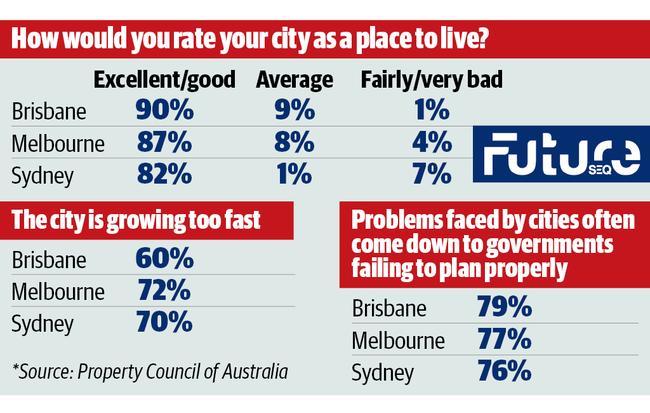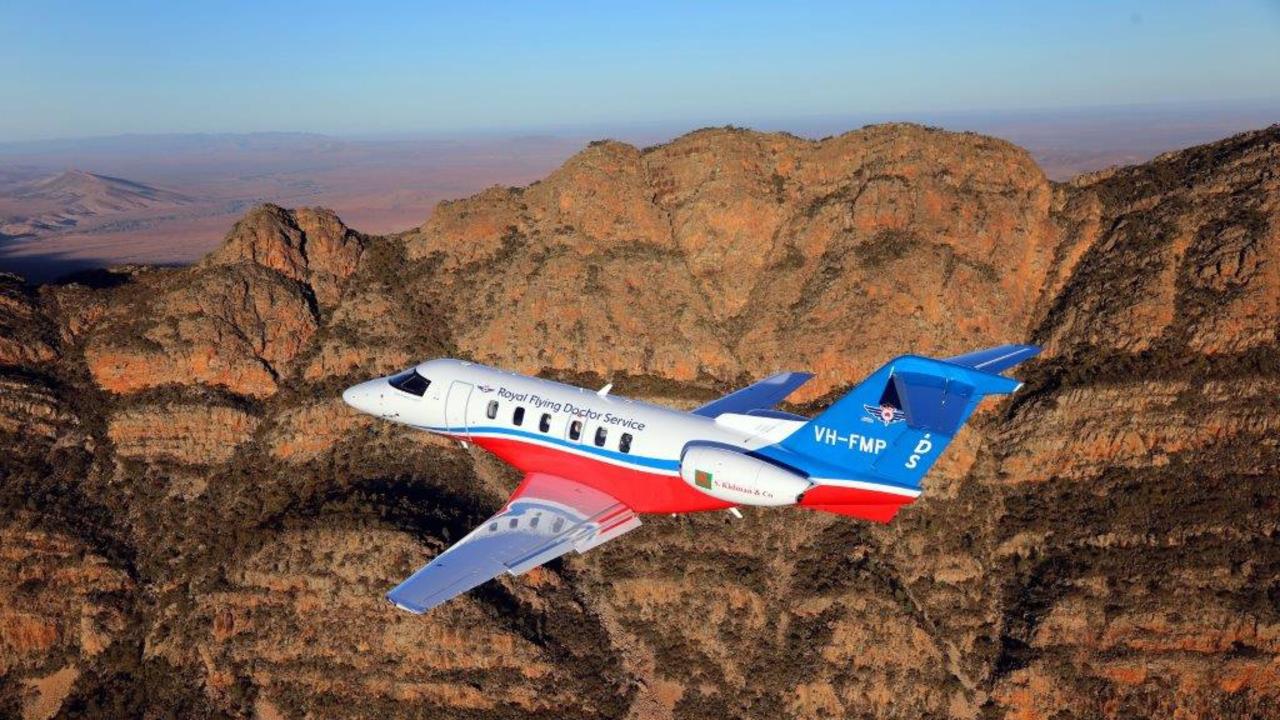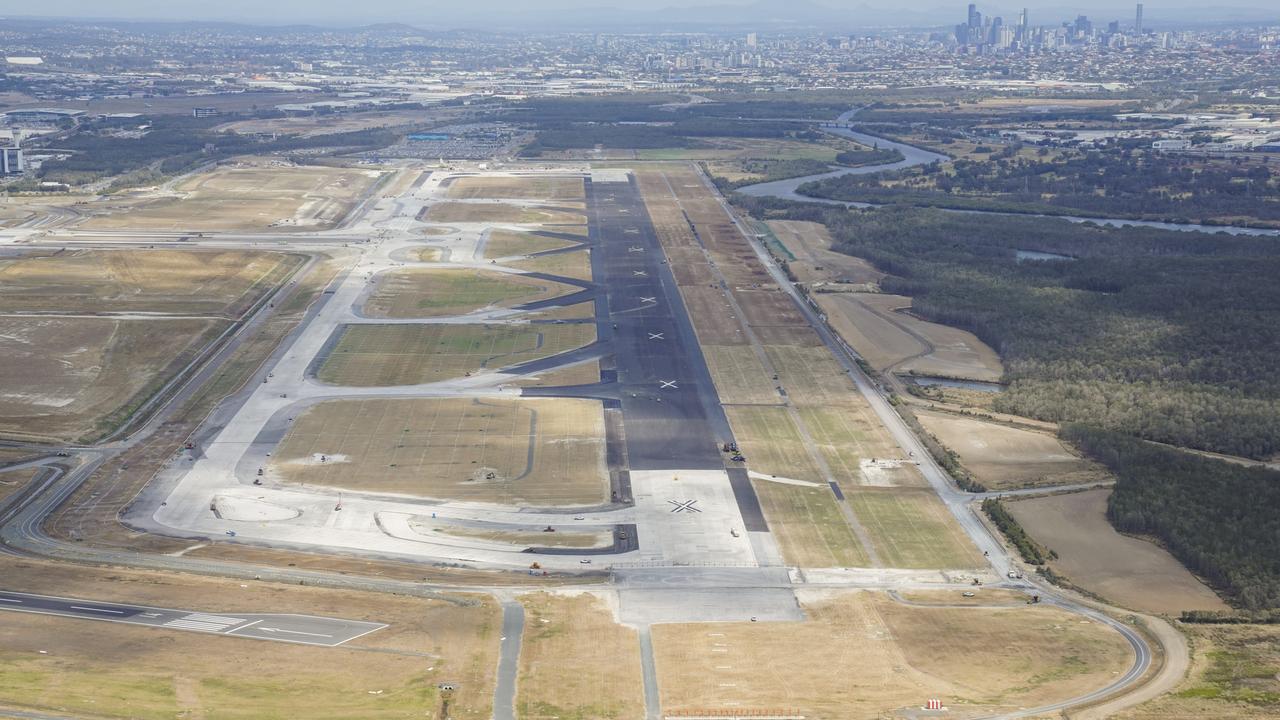Population dilemma: Will Brisbane boom or burst?
It’s arguably the best place in the world to live, but that doesn’t mean residents of Brisbane are totally happy.
Future QLD
Don't miss out on the headlines from Future QLD. Followed categories will be added to My News.
SIXTY per cent of Brisbane residents believe the city is growing too quickly, new research reveals.
And two-thirds of people say politicians are guilty of blaming increased migration to cover their own lack of planning, which has resulted in congestion and crowding.
How southeast will look in 2043
Our booming population hotspots
“Concern about growth is real, and we should dig a little deeper to think about its root cause and take steps to address it,” Property Council Queensland executive director Chris Mountford said.
The Property Council commissioned the poll in seven state capitals ahead of next week’s COAG meeting, where Prime Minister Scott Morrison and premiers will discuss the impact of rising population and migration on the country’s biggest cities.
“There is not the high negativity around growth that we might expect,” Mr Mountford said. “There’s a deeper understanding that growth, done well and managed well, can deliver good outcomes.

Three-quarters of Brisbane respondents said population increase was good if properly planned. And 79 per cent think the problems faced by cities come down to governments having failed to plan well.
The results reflect many of the issues highlighted in The Courier-Mail’s Future SEQ series investigating the challenges and opportunities for the region to 2043.
“With the population of SEQ expected to boom by a further 1.8 million over the next 25 years, we must take steps now to build public confidence in the management of future growth,” Mr Mountford said.
The Prime Minister plans to cut Australia’s annual migrant intake cap by 30,000, and the Federal Government has flagged a policy of encouraging new arrivals to locate in regional areas.
Mr Morrison has asked state and territory leaders to bring their own population strategies to next week’s COAG meeting — and wants them to nominate population targets by the end of January.
Queensland Premier Annastacia Palaszczuk is expected to tell the COAG gathering that the Sunshine State is prepared for population rises, but needs federal investment in infrastructure to do so and take some of the burden off the southern capitals.
While Sydney had secured $9.8 billion, and Melbourne $7.2 billion, from the Coalition Government in the past five years for infrastructure projects, Brisbane got only $300 million towards the $1 billion Metro public transport initiative — and no contribution to the $5.4 billion Cross River Rail network.
The State Government and SEQ Council of Mayors have agreed to draw up a City Deal, setting infrastructure priorities and funding models for the next 15 to 20 years, but the Federal Government has not yet committed.
Acting State Development, Infrastructure and Planning Minister Stirling Hinchliffe said it was no surprise people were attarcted to Queensland, and the state was investing in growing the economy, creating jobs and delivering services but was being starved by Canberra.
“The Federal Government has got to quit treating Brisbane as a second-class city and back Queensland infrastructure,” he said.


